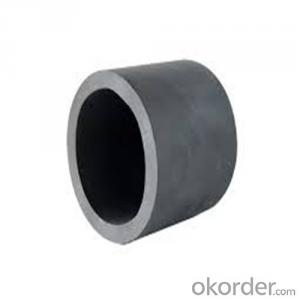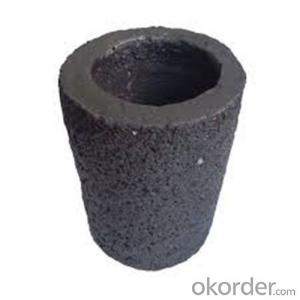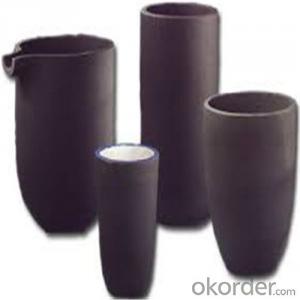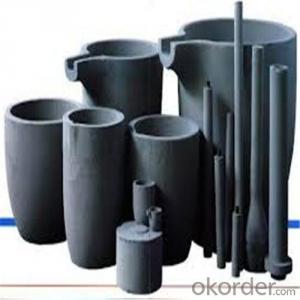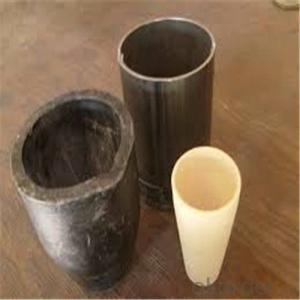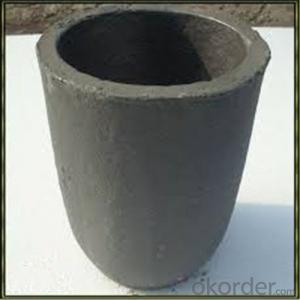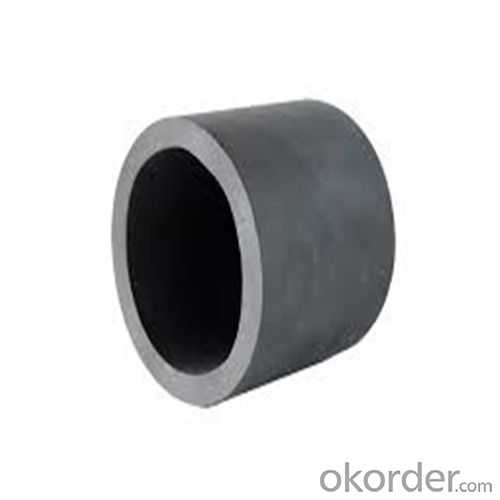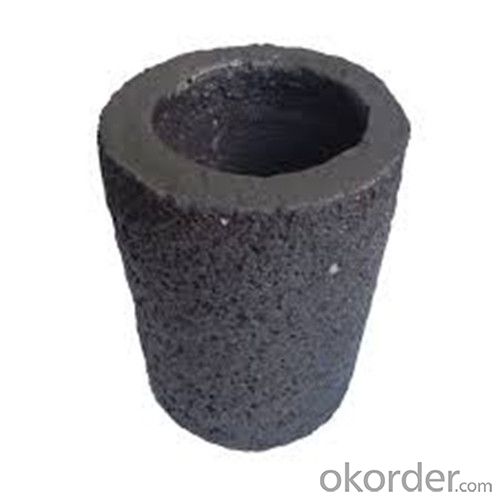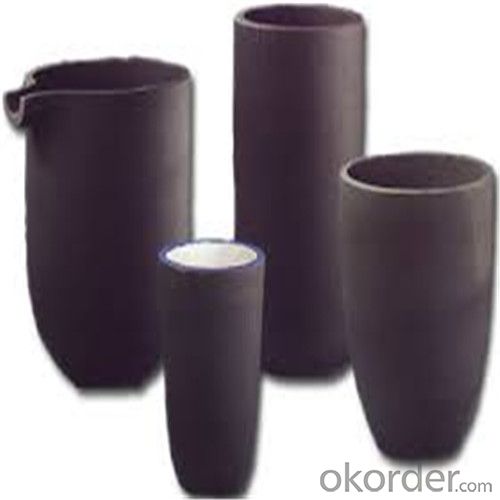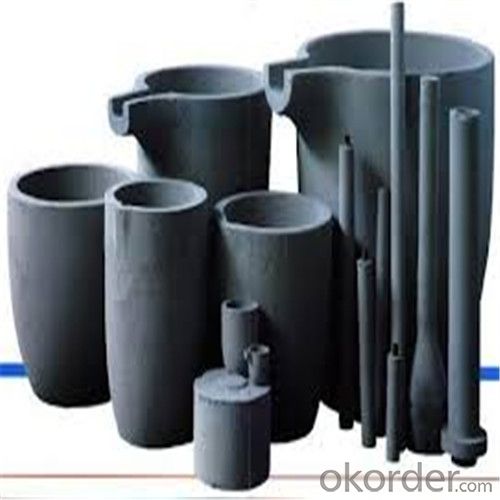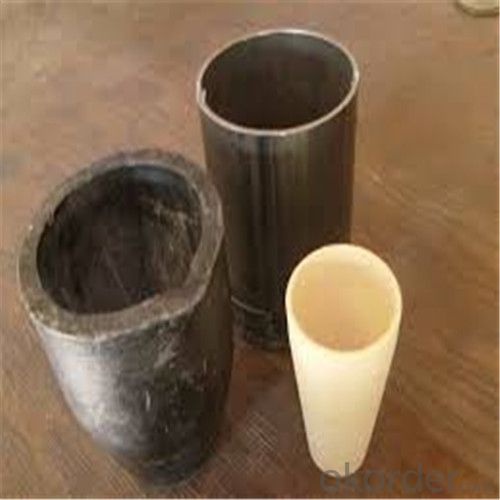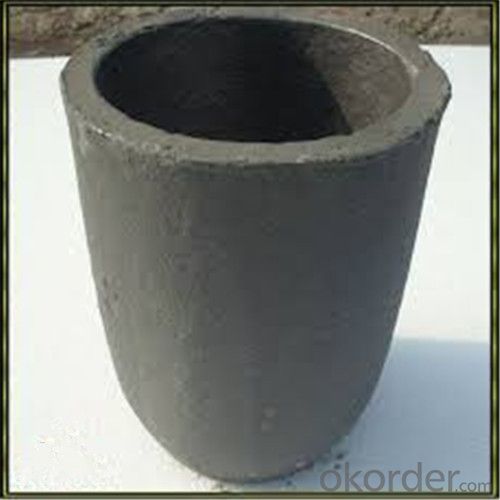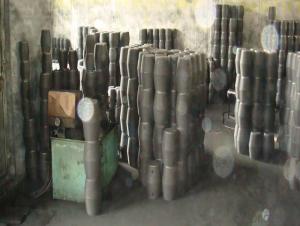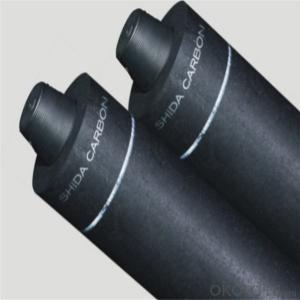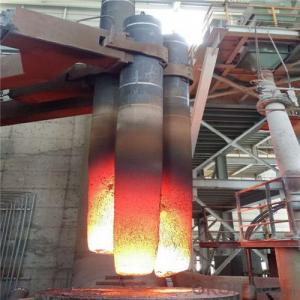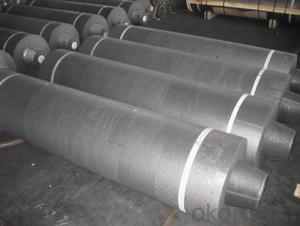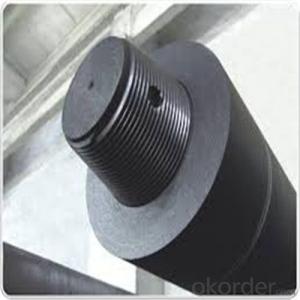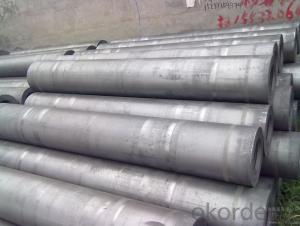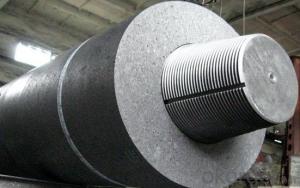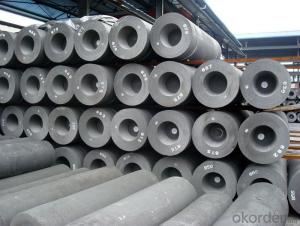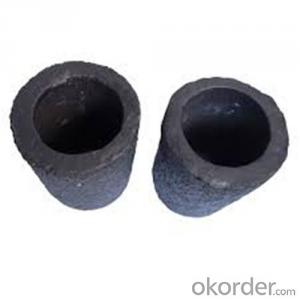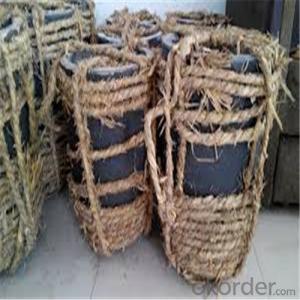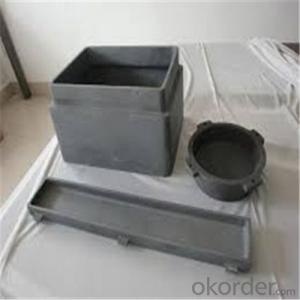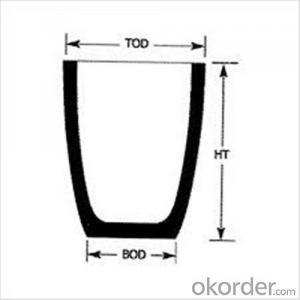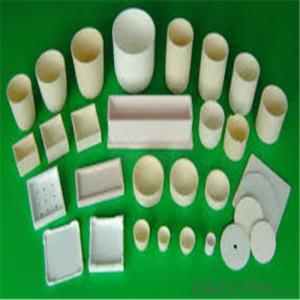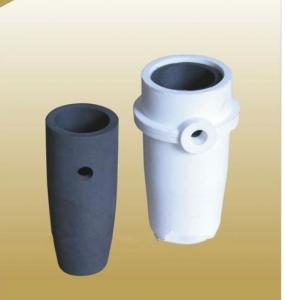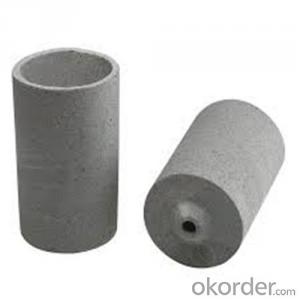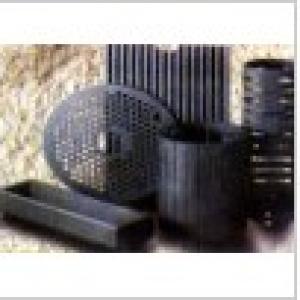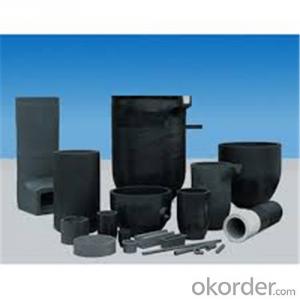Best Crucible Graphite - SIC Crucibles with High Heat Resistance
- Loading Port:
- Shanghai
- Payment Terms:
- TT OR LC
- Min Order Qty:
- 1 pc
- Supply Capability:
- 1000 pc/month
OKorder Service Pledge
OKorder Financial Service
You Might Also Like
Quick Details for SiC Crucibles,SIC Graphite Crucible, Graphite Crucible with Hihg Heat Resistance 2015
| Type: | High Strength, graphite crucible crucible | Application: | melting metal | Height: | as your requirements |
| Composition: | High Pure | Top Diameter: | 10-600mm | Bottom Diameter: | 10-1000mm |
| Place of Origin: | China (Mainland) | Brand Name: | Model Number: | ||
| Color: | Black grey | Si3N4%: | 5min | Fe2O3%: | 0.7max |
| C%: | 30-45 | Apparent porosity: | 30max | Refractoriness: | 1680 |
| Bulk Density: | 1.71min | Using life: | >5000 hours | MAX temperature: | 1600c |
Packaging & Delivery
| Packaging Details: | Seaworty packing or as per customer's detail requirement of graphite crucible. |
| Delivery Detail: | within 20-30 days after confirm order of graphite cru |
SiC Graphite Crucibles For Melting Aluminium And Copper, Brass
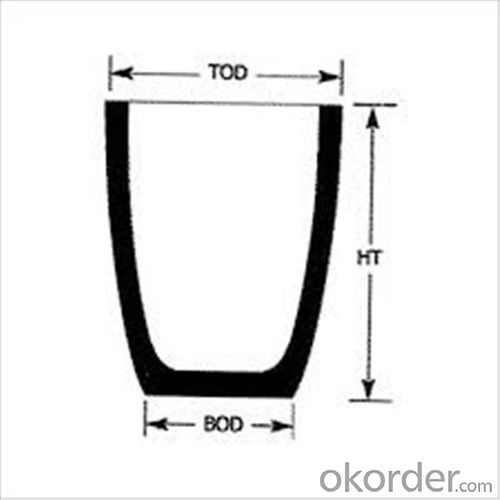
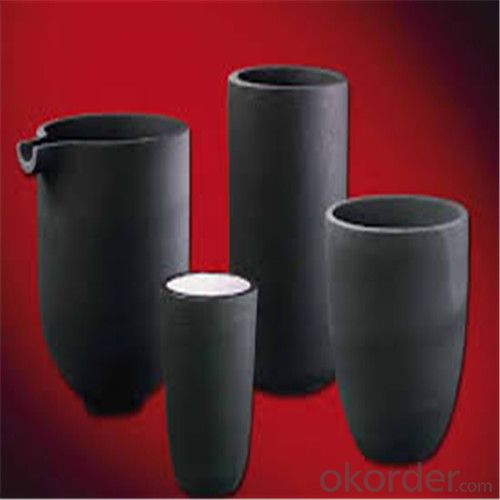
Physicochemical Properties of graphite crucible:
Features of SiC 95% silicon carbide sic crucible
1. resistance to deformation at high temperature,
2. thermal shock resistance, wear resistance, corrosion resistance.
3. anti-oxidation, anti- erosion.
Usage of SiC 95% silicon carbide sic crucible
electricity and steel slag trench,
coal chemical and mining transport pipeline.
high pure graphite | ||||
Item | Unit | baked twice | baked three time | baked four times |
impregnated once | impregnated twice | impregnated three times | ||
grain size | mm | ≤325μm | ≤325μm | ≤325μm |
Bulk density | g/cm3 | ≥1.68 | ≥1.78 | ≥1.85 |
Specific resistance | μΩ.m | ≤14 | ≤14 | ≤13 |
Bending strength | MPa | ≥25 | ≥40 | ≥45 |
Compressive strength | MPa | ≥50 | ≥60 | ≥65 |
Ash content | % | ≤0.15 | ≤0.1 | ≤0.05 |
Fine-grain Specialty Graphite FXG-1 | Fine-grain Specialty Graphite FXG-2 | ||||
Item | Unit | Guarantee value | Typical value | Guarantee value | Typical value |
Max grain size | mm | 0.8 | 0.8 | 0.8 | 0.8 |
Bulk density | g/cm3 | ≥1.70 | 1.73 | ≥1.73 | 1.76 |
Specific resistance | μΩ.m | ≤8.5 | 7.5 | ≤8.0 | 7 |
Bending strength | MPa | ≥10.0 | 11 | ≥12.0 | 12.5 |
Compressive strength | MPa | ≥24.0 | 27 | ≥31.0 | 34 |
Thermal Condcutivity | W/(m.k) | ≥120 | 150 | ≥130 | 160 |
C.T.E.(100-600) °C | 10-6/°C | ≤2.5 | 2.2 | ≤2.5 | 2.1 |
Ash content | % | ≤0.3 | 0.09 | ≤0.3 | 0.09 |
FAQ
1.What's your MOQ?
We will indicate the MOQ for each item in the quotation list. We accept the sample and trail order.
2.Can I negotiate the Prices?
Sure, we may consider discounts for bulk order of products.
3.How long will it take to complete my order?
For the stock items, we can arrange the shippment within 2~3days after received your payment. For the customized items, we will indicate the delivery time in the quotation list.
4.Can you give warranty of your products?
Yes, we extend a 100% satifisfaction guarantee on all items. Please feel free to provide timely feedback if you're not satisfied with N&D's Quality and Service. For the overseas orders, if there is a quality problem, please kindly to provide the picturers to show the problem by e-mail. We will provide the replacements to you at our cost according to actual conditions.
5.Can I visit you?
Sure. If you're a volume buyer and would like to visit our in-house products and production line, please contact us to make an appointment.
- Q: Can graphite crucibles be used for melting pharmaceutical compounds?
- Yes, graphite crucibles can be used for melting pharmaceutical compounds. Graphite crucibles are known for their high melting point, which makes them suitable for high-temperature applications such as melting metals, alloys, and even certain chemicals. Since pharmaceutical compounds can have different melting points, it is important to ensure that the temperature range of the graphite crucible is compatible with the melting point of the specific compound being melted. Additionally, graphite crucibles are chemically inert and have low reactivity, which reduces the risk of contamination or chemical reactions with the pharmaceutical compounds during the melting process. However, it is essential to consider the specific requirements and properties of the pharmaceutical compound being melted to ensure compatibility with the graphite crucible.
- Q: How do you determine the appropriate crucible stirring mechanism for a specific application?
- Determining the appropriate crucible stirring mechanism for a specific application involves considering several factors. Firstly, you need to understand the requirements of the application, such as the type of material being stirred, the desired mixing intensity, and any specific parameters that need to be maintained during the stirring process. Next, you should evaluate the available stirring mechanisms and their capabilities. There are various options, including magnetic stirrers, mechanical stirrers, and gas bubbling stirrers. Each mechanism has its own advantages and limitations, so it's important to assess how well they align with your application requirements. Consider the properties of the material being stirred. Some materials may be sensitive to mechanical stress or temperature changes, making them better suited for gentle magnetic stirring. Others may require more vigorous mixing, which can be achieved with mechanical or gas bubbling stirrers. Additionally, assess the compatibility of the stirring mechanism with the crucible material. Certain materials may react with specific stirring mechanisms, leading to contamination or degradation. Ensure that the chosen stirring mechanism is compatible with the crucible material to avoid any adverse effects. Moreover, consider the scalability and ease of use of the stirring mechanism. If the application requires a large-scale production or frequent stirring, choosing a mechanism that is easily scalable and user-friendly can be beneficial. Lastly, consult experts or conduct experiments to validate the suitability of the chosen stirring mechanism. This can involve performing small-scale trials or seeking advice from professionals familiar with the specific application or material being stirred. Overall, determining the appropriate crucible stirring mechanism requires careful consideration of the application requirements, material properties, compatibility, scalability, and expert advice.
- Q: What are the different methods of monitoring the melting process in a graphite crucible?
- There are several methods available for monitoring the melting process in a graphite crucible. These methods can provide valuable information about the temperature, consistency, and progress of the melting process. 1. Visual Inspection: One of the simplest methods is to visually inspect the melting process. This can be done by observing the color, consistency, and movement of the materials being melted. For example, if the materials are turning into a liquid state and flowing smoothly, it indicates that the melting process is progressing as expected. 2. Thermocouples: Thermocouples are widely used for temperature measurement in various industrial processes, including melting in graphite crucibles. These devices consist of two different metals joined together at one end. By measuring the voltage difference between the two ends, the temperature can be determined. Thermocouples can be inserted into the crucible or placed near it to monitor the temperature accurately. 3. Infrared Pyrometers: Infrared pyrometers are non-contact temperature measurement devices that use infrared radiation to determine the temperature of an object. They can be used to monitor the temperature of the graphite crucible during the melting process without physically touching it. Infrared pyrometers provide quick and accurate temperature readings. 4. Optical Emission Spectroscopy (OES): OES is a technique that analyzes the light emitted by the materials being melted to determine their composition and temperature. By analyzing the spectral lines and intensities of the emitted light, OES can provide valuable information about the melting process, including temperature and the presence of impurities or alloying elements. 5. Pressure Measurement: Monitoring the pressure inside the graphite crucible can also be an indicator of the melting process. As the materials melt and vaporize, the pressure inside the crucible may increase. Pressure sensors can be employed to measure the pressure changes during the melting process, providing insight into the progress of the melting and the behavior of the materials. These methods can be used individually or in combination to monitor the melting process in a graphite crucible. By employing one or more of these techniques, operators can ensure that the melting process is proceeding as intended and make any necessary adjustments or interventions to maintain optimal conditions.
- Q: Corundum crucible and graphite crucibleSome enterprises use graphite crucibles in vacuum furnaces, while some larger ones use corundum crucibles. What I want to know is the advantages and disadvantages of corundum crucibles and graphite crucibles
- Corundum temperature limited, easily cracked at high temperature. But the chemical stability is good, do not use under vacuum. In contrast, corundum is much cheaper.
- Q: How does the purity of the graphite affect the melting process in a crucible?
- The melting process in a crucible can be significantly influenced by the purity of graphite. Graphite is commonly used as a crucible material because of its high melting point and excellent thermal conductivity. However, impurities present in the graphite can introduce variations in the melting process. High purity graphite, with minimal impurities, offers several advantages. Firstly, it has a higher melting point compared to impure graphite. This means it can endure higher temperatures without undergoing structural changes or degradation. Consequently, a crucible made from high purity graphite can be utilized in processes that require extremely high temperatures, such as melting metals or performing high-temperature chemical reactions. Moreover, high purity graphite exhibits better thermal conductivity. This property enables more efficient heat transfer, resulting in faster and more uniform melting. With improved thermal conductivity, heat is evenly distributed throughout the crucible, preventing hotspots and ensuring a consistent melting process. This is especially crucial when melting alloys or other materials with varying melting points, as it aids in achieving a homogeneous melt. On the other hand, impurities in graphite can have a detrimental effect on the melting process. Impure graphite may have a lower melting point compared to its high purity counterpart. This can lead to premature melting or deformation of the crucible, limiting its ability to withstand high temperatures. Additionally, impurities can act as nucleation sites, causing irregular crystallization and affecting the quality of the melted material. Furthermore, impurities can decrease the thermal conductivity of the graphite. This can result in inefficient heat transfer, leading to uneven heating and longer melting times. Non-uniform heating can cause localized overheating or incomplete melting, which can negatively impact the quality and consistency of the final product. To conclude, the purity of graphite plays a crucial role in the melting process in a crucible. High purity graphite offers a higher melting point, better thermal conductivity, and improved overall performance, ensuring efficient and consistent melting. Conversely, impure graphite can have a lower melting point, reduced thermal conductivity, and can negatively affect the quality of the melted material. Therefore, selecting a high purity graphite crucible is essential for achieving optimal results in various melting applications.
- Q: What are the technical specifications of graphite crucibles?
- Crucible; physical and chemical index; standard parameter; test dataThe refractoriness is 1680 degrees, and the refractoriness is 1685Carbon content 38%, carbon content 41.46%Porosity less than 35% porosity is less than 32%Volume density 1.6g/cm3 volume density 1.71g/cm3The above data are referred to Qingdao Huatai graphite, hope to adopt, thank you.
- Q: What are the characteristics of jade? There are jade and jade on the market. How do you distinguish it from jade?
- The first is to make amorphous jade glass material. The reagent and reagent of sodium aluminum silicate and silicate containing colouring ions, according to the composition of jadeite content, is placed in a crucible into the mixing and grinding after the vessel, and then placed in a muffle furnace crucible is heated to 1100 degrees Celsius, and constant temperature cooling after a few hours, they can get colored amorphous glass material the composition of jadeite jade. The second is made of crystal jade glass. The amorphous glass will jade colored pieces to more than 125 meshes (i.e. particle size less than 0.125 mm), 600 kg / cm on the embedded prototype, heating prefabricated 14X15 (mm) cylinder or 14X6 (mm) of the wafer; then the preformed cylinder or wafer in high-purity graphite crucible. Bake in the oven at 140 degrees Celsius for 24 hours or more; and then the pressure chamber six crucible into a compressor, the compressor start six top closure, in the long time, current power, pressure relief, can get the crystal jade glass. Synthetic emerald glass by X ray powder diffraction analysis, infrared absorption spectrum analysis, chemical composition analysis, hardness measurement, relative density (specific gravity), determination of refractive index determination, fluorescence analysis, and the data are basically consistent with natural jade.
- Q: How do you determine the appropriate crucible tongs for a specific application?
- When choosing the right crucible tongs for a specific task, several important factors should be taken into account. Initially, the size and weight of the crucible that will be used must be determined. Crucible tongs are typically designed to accommodate a specific range of crucible sizes and weights, so it is crucial to select tongs that can securely and safely grip the crucible. Subsequently, the material of the crucible and the temperature at which it will be employed should be considered. Different materials and temperatures necessitate different types of tongs. For instance, if the crucible is composed of a heat-resistant material like ceramic or porcelain and will be exposed to high temperatures, it is crucial to opt for tongs specifically designed for high-temperature applications, such as those made from stainless steel or other heat-resistant alloys. Furthermore, the shape and design of the crucible should be taken into account. Some crucibles possess distinctive features, like handles or spouts, which require tongs with a specific shape or grip. It is important to choose tongs that can securely hold the crucible without causing any damage to its shape or structure. Lastly, the comfort and safety of the user should be considered when selecting crucible tongs. Tongs with ergonomic handles and a comfortable grip should be sought after to minimize the risk of accidents or injuries. It is also essential to ensure that the tongs are in good condition, showing no signs of wear or damage that could compromise their strength or stability. In conclusion, careful consideration of the crucible's size, weight, material, temperature, shape, and the user's comfort and safety is necessary when determining the appropriate crucible tongs for a specific application. Taking these factors into account will ensure that the chosen tongs are suitable for the task at hand and can securely handle the crucible throughout its use.
- Q: What material of graphite is used in arc furnace production?
- Today, large diameter semi graphitic carbon electrodes have been adopted in industrial silicon electric furnaces. Can effectively save production costs, and the technology is relatively mature.
- Q: How do you prevent thermal shock in graphite crucibles?
- To prevent thermal shock in graphite crucibles, it is essential to gradually heat and cool them. This can be achieved by preheating the crucibles before use and avoiding sudden temperature changes. Additionally, ensuring a proper and even distribution of heat during heating and cooling processes can help minimize the risk of thermal shock.
Send your message to us
Best Crucible Graphite - SIC Crucibles with High Heat Resistance
- Loading Port:
- Shanghai
- Payment Terms:
- TT OR LC
- Min Order Qty:
- 1 pc
- Supply Capability:
- 1000 pc/month
OKorder Service Pledge
OKorder Financial Service
Similar products
Hot products
Hot Searches
Related keywords
